Long way to orders: multiple launch rocket system PULS (Israel)
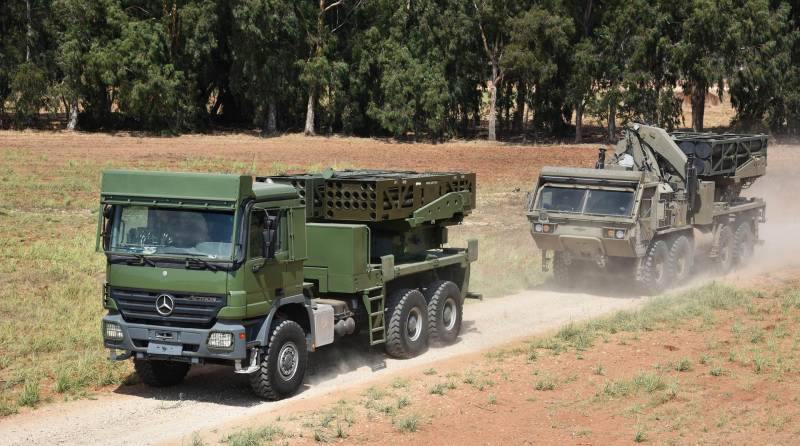
Two MLRS PULS on different chassis with different weapons. The one in front carries 122 mm rockets, the car behind it is equipped with 306 mm products
For a long time, the Israeli military industry has been promoting its PULS multiple launch rocket system on the international market. It can use ammunition of different calibers and types, and is also equipped with a modern control system. It is argued that all this provides significant advantages over other modern MLRS. However, until recently, PULS could not find a buyer.
Long story
In the past, the Israeli company Israel Military Industries was actively involved in the development of various weapons, incl. rocket artillery. In the middle of the XNUMXs, she developed another project of this kind, called "Kotesh" (Hebrew "Crushing") and Lynx (English "Lynx"). A MLRS was proposed on a wheeled chassis, capable of using unified transport and launch containers with missiles of various calibers and types.
MLRS "Kotesh" passed the necessary tests and was regularly demonstrated at exhibitions. The development of the project also continued through the improvement of on-board systems and the introduction of new missiles. However, despite all the efforts of the developer, orders could not be received. Foreign armies were more willing to acquire other multiple launch rocket systems from IMI, and the prospects for the Lynx remained unclear.
In 2018, Elbit Systems acquired IMI with all developments and renamed it Elbit Systems Land. It was decided to continue a number of projects, incl. modular MLRS and its modifications. At the same time, the Kotesh project in 2019 received a new designation PULS (Precise & Universal Launching System). Various modifications of the existing system were renamed in a similar way.
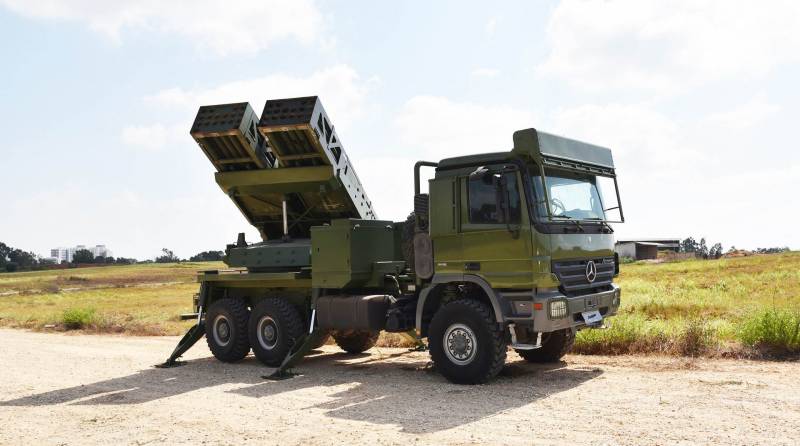
Already under the new name, the MLRS continued to be promoted on the market, and again without much success. During the first few years, the PULS product in different versions only attracted the attention of visitors at exhibitions, but nothing more. However, recently the situation began to change and the first orders appeared.
European direction
In June 2022, the Israeli company Elbit Systems and the German concern Krauss-Maffei Wegmann signed a memorandum of cooperation in the field of rocket artillery. It was planned to develop a joint project for a deep modernization of the existing US-made M270 MLRS / MARS MLRS. With such a project, they wanted to enter the European market and receive orders for updating the equipment available to the countries of the region.
A few months later, Elbit and KMW announced they were refusing to upgrade the M270 and developing a project on a different base. The new MLRS for the European market was made on the basis of the Israeli PULS. The Euro-PULS project provides for a slight restructuring of the finished Elbit multiple launch rocket system with the introduction of certain devices and / or ammunition at the request of the customer.
Even before the official premiere, the Euro-PULS project was offered to potential customers in the face of unnamed European armies. The developers assume that he will find his buyer, and in the near future the production of new MLRS will begin. The assembly is planned to be organized by Israeli and German enterprises. At the same time, at least most types of missiles will be produced in Europe.

MLRS with TPK for 160-mm AccuLAR-160 missiles
First successes
MLRS "Kotesh" / Lynx, later renamed PULS, was introduced a decade and a half ago, but since then has not shown any commercial success. The situation has begun to change only in recent months. Against the backdrop of a general deterioration in the situation in the region, several European countries gathered to update their MLRS fleet and even became interested in Israeli development.
At the end of January 2023, information appeared in the specialized media about the negotiations between the Danish Ministry of Defense and Elbit Systems. According to their results, a contract was to appear for the supply of artillery systems ATMOS and MLRS PULS - 19 and 8 units. respectively. The total cost of the equipment was estimated at $260 million.
In early March, the Elbit company announced that it had received two orders from an unnamed European NATO country for the supply of howitzers and MLRS. As previously reported, two PULS batteries of eight combat vehicles have been ordered, as well as a supply of missiles for them. All products will be delivered to the customer over the next three years, and the first can be shipped this year. The cost of production is 133 million dollars.
Which version of the MLRS will be supplied to Denmark, the original or "European", is not specified. The range of ordered ammunition is also not disclosed. However, even in this case, Elbit Systems has a reason to be happy - after many years of an advertising campaign, it finally managed to find a real customer.
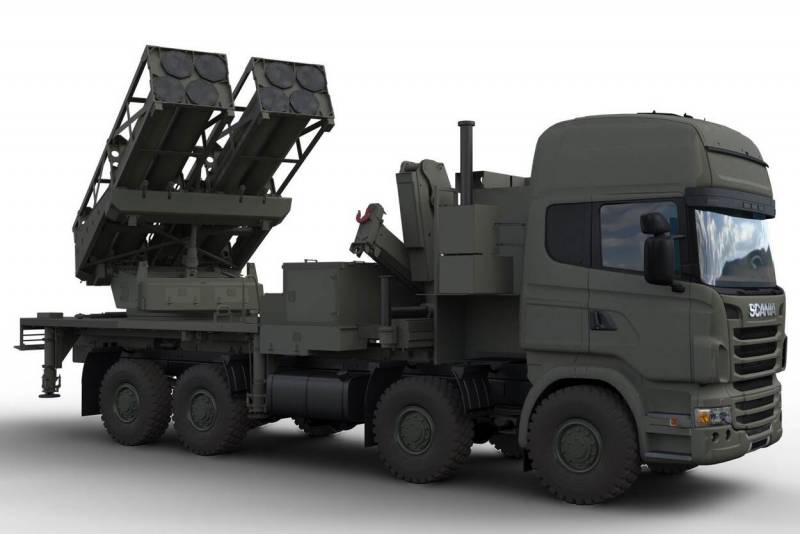
Estimated appearance of MLRS PULS for the Netherlands
As it soon became clear, there were negotiations with another customer in parallel. On April 3, the Minister of Defense of the Netherlands announced the signing of contracts for the supply of a number of foreign weapons systems. Together with other products, a certain number of modular MLRS PULS will be purchased. The first combat vehicles will enter the army this year, thanks to which the Netherlands will again have rocket artillery.
The Minister did not specify the details of the signed contract. But on the same day, the Elbit company published its press release about receiving an order from an unnamed European country. Apparently, it was about the Netherlands. The value of this contract reached 280 million dollars, which indicates the delivery of four batteries with 16 combat vehicles, as well as a stock of missiles. Delivery time - three years from the date of conclusion of the contract.
Modularly
In terms of overall architecture and design features, the PULS product is similar to other multiple launch rocket systems. This MLRS is built on a multi-axle off-road vehicle chassis. Fire control devices are placed in the cab of the vehicle, and a launcher is mounted on the cargo platform. In this case, the system is actually a set of modules suitable for installation on different platforms.
Different vehicles can be used as a base for PULS. So, the Netherlands will receive MLRS on a four-axle Scania brand chassis. In advertising materials from Elbit Systems Land, cars of other brands appear. Despite the use of different chassis, combat vehicles in the proposed configurations have similar characteristics of mobility and cross-country ability.
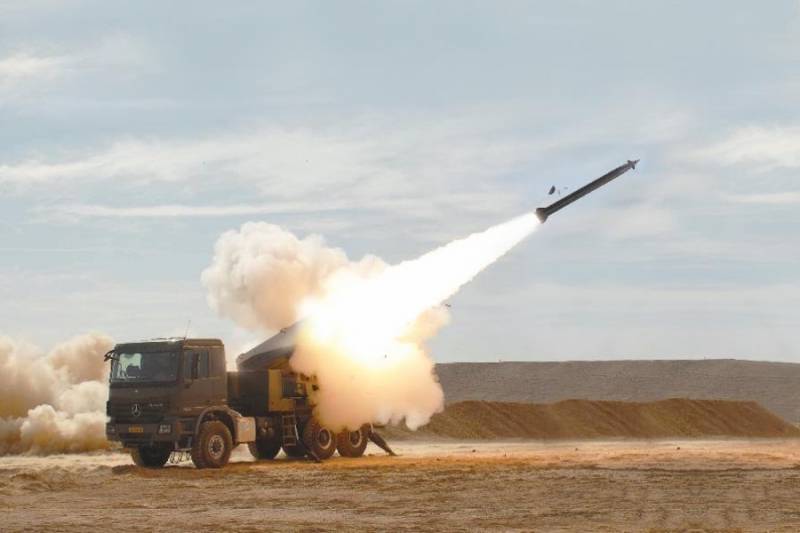
Launch of a long-range rocket EXTRA
In all cases, PULS receives a digital fire control system. It is made on the basis of a computer, in the memory of which there is information on all compatible ammunition. Receiving information about its location and the coordinates of the target, the computer calculates the data for firing and controls the aiming, and, if possible, enters information into the memory of the missiles.
PULS has a universal launcher with the ability to aim in two planes. The installation can accept two unified transport and launch containers with missiles of the desired type. It is curious that the design and dimensions of the TPK are borrowed from the American MLRS M270 and M142. At the same time, the layout of launch tubes with missiles differs due to other calibers. The loading of the container is carried out by a crane-manipulator of the transport-loading machine. In addition, some chassis options allow you to have your own crane.
Modular multi-caliber MLRS PULS can use TPK with four types of missiles. To solve combat missions at tactical depth, AccuLAR-122 guided missiles of 122 mm caliber with a range of 35 km are used. One standard container holds 18 such items - the total ammunition load includes 36 missiles. There is a similar ammunition in caliber 160 mm - AccuLAR-160 with a range of 60 km. TPK carries ten such missiles.
More distant targets are proposed to be hit with EXTRA missiles with a caliber of 306 mm. They have a range of 150 km. At the same time, due to the large dimensions, only four products fit in the TPK. The largest are Predator Hawk missiles. The 370 mm caliber allowed only two such ammunition to be placed in the container. Range - up to 300 km. Both long-range missiles have guidance means.
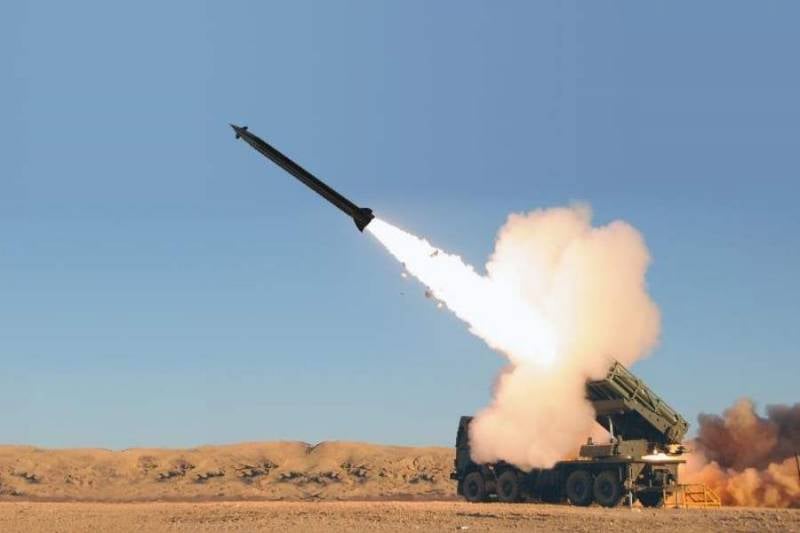
In the future, it is possible to develop new guided missiles with the required characteristics. We should expect an increase in the range of AccuLAR missiles, as well as an increase in the accuracy and power of larger products. At the same time, an increase in their range over 300 km is not possible due to the existing export restrictions.
Unclear future
The Israeli military industry has long been involved in the development and production of its own multiple launch rocket systems. The Kotesh / Lynx / PULS product was another development in this area, and new promising ideas and solutions were used in its creation. However, the desired results were not obtained. Despite all efforts to promote, for many years the modular MLRS could not find its customer.
The situation began to change only this year - a decade and a half after the premiere of the new MLRS. In recent months, Elbit Systems has received two contracts for the production of about 20-25 multiple rocket launchers and ammunition for them. In addition, measures are being taken to attract new customers. Whether they justify themselves and whether it will be possible to get new orders, time will tell.
Information